
# 1726 PB - 1977 13c Articles of Confederation
Bicentennial Series
Continental Congress Approve Articles Of Confederation
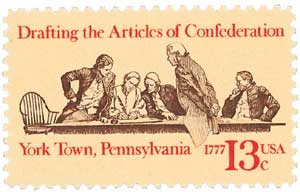
On November 15, 1777, the Continental Congress approved the Articles of Confederation after 16 months of debate.
One of the earliest attempts to encourage cooperation and unity among the colonies was the 1754 Albany Congress. Also known as the Conference of Albany, it was the first time representatives from different colonies came together to discuss common concerns.
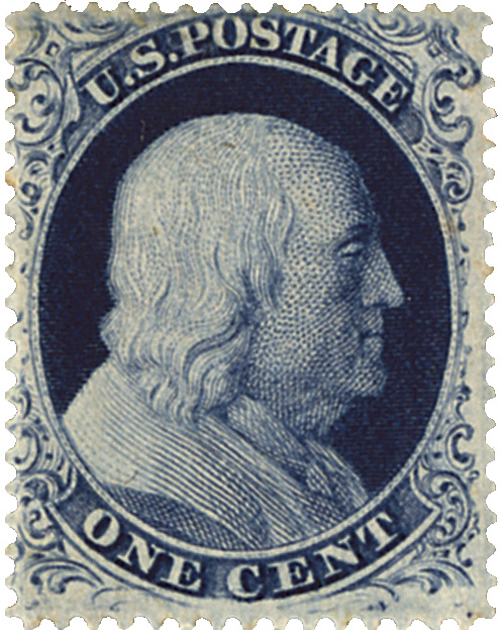
The meeting was mostly aimed at establishing treaties with Native Americans. However, much time was spent debating Benjamin Franklin’s Albany Plan – his call to establish a unified colonial government. While the plan was ultimately rejected, many of the ideas were later instituted in the Articles of Confederation. Franklin later claimed that had the Albany Plan been adopted, America’s fight for independence might have been delayed.
But over the next 20 years, the situation in the colonies changed drastically. The British began instituting new taxes that the colonists saw as unfair and tensions escalated, leading to armed conflict in the spring of 1775. Shortly after the fighting began, the Second Continental Congress met and began working as the colonies’ provisional government. Without an established government, the responsibility managing the war fell on the Congress. They adopted trade restrictions, created an army, issued currency, and negotiated with foreign governments.
The men of the Congress also knew that in order to be taken seriously by other nations, they needed legitimize themselves, as at that point, other nations saw them as rebels against an established monarchy. So the Continental Congress created three committees to draft the necessary documents – a Declaration of Independence, a Model Treaty, and the Articles of Confederation. The declaration would announce America’s entry into international relations, the model treaty was a guide for foreign relations, and the articles would serve as an international agreement on the formation of significant institutions for domestic and foreign affairs.
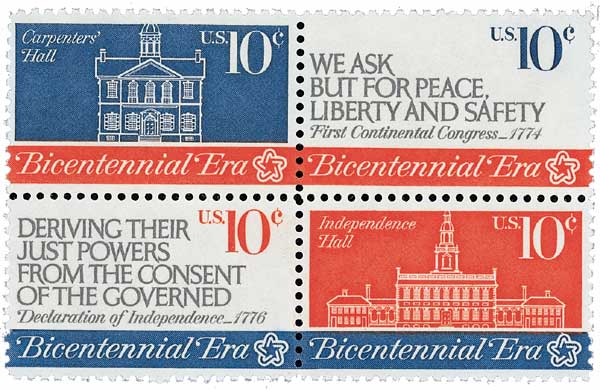
On June 12, 1776, the Continental Congress appointed a committee of 13 to draft a constitution for the new nation. Their goal was to create “a plan of confederacy for securing the freedom, sovereignty, and independence of the United States.” Led by John Dickinson, the committee worked for a month before presenting their ideas to Congress on July 12. They spent a great deal of time debating a number of issues including sovereignty, the powers of the new government, voting procedures, and whether to have a judiciary. The debates dragged on for a year before the final draft of the articles was written in the summer of 1777. Then, on November 15, 1777, Congress ratified the Articles of Confederation.
The rules and ideas set forth by the Articles went into use almost immediately. However, in order for the Articles to truly become law, they needed to be ratified by each of the states. Virginia was the first to ratify, on December 16, 1777. Over the next three years, the other 12 states slowly ratified. The process was slow because many of the states wanted additional conditions added. Maryland was the final state to ratify, on February 2, 1781. There was a formal ceremony marking the final ratification on March 1. The Continental Congress ended and the United States Congress began governing the next day.
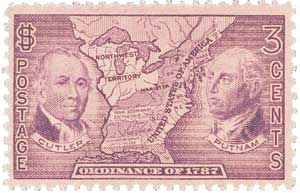
The Articles of Confederation established a “firm league of friendship” among the 13 states. It gave the Congress responsibility for conducting foreign affairs (including war), maintaining an army and navy, and many other functions. One of the most lasting laws passed under the Confederation was the Northwest Ordinance of 1787. Historians consider this law one of the most important ever passed in U.S. history, as it provided the model for the organized growth of the U.S. The ordinance established government for the area north of the Ohio River and west of Pennsylvania, and illustrated the steps a territory would need to take to achieve statehood. The territory was quickly settled and eventually became five U.S. states: Ohio, Indiana, Illinois, Michigan, and Wisconsin. It also included part of Minnesota.
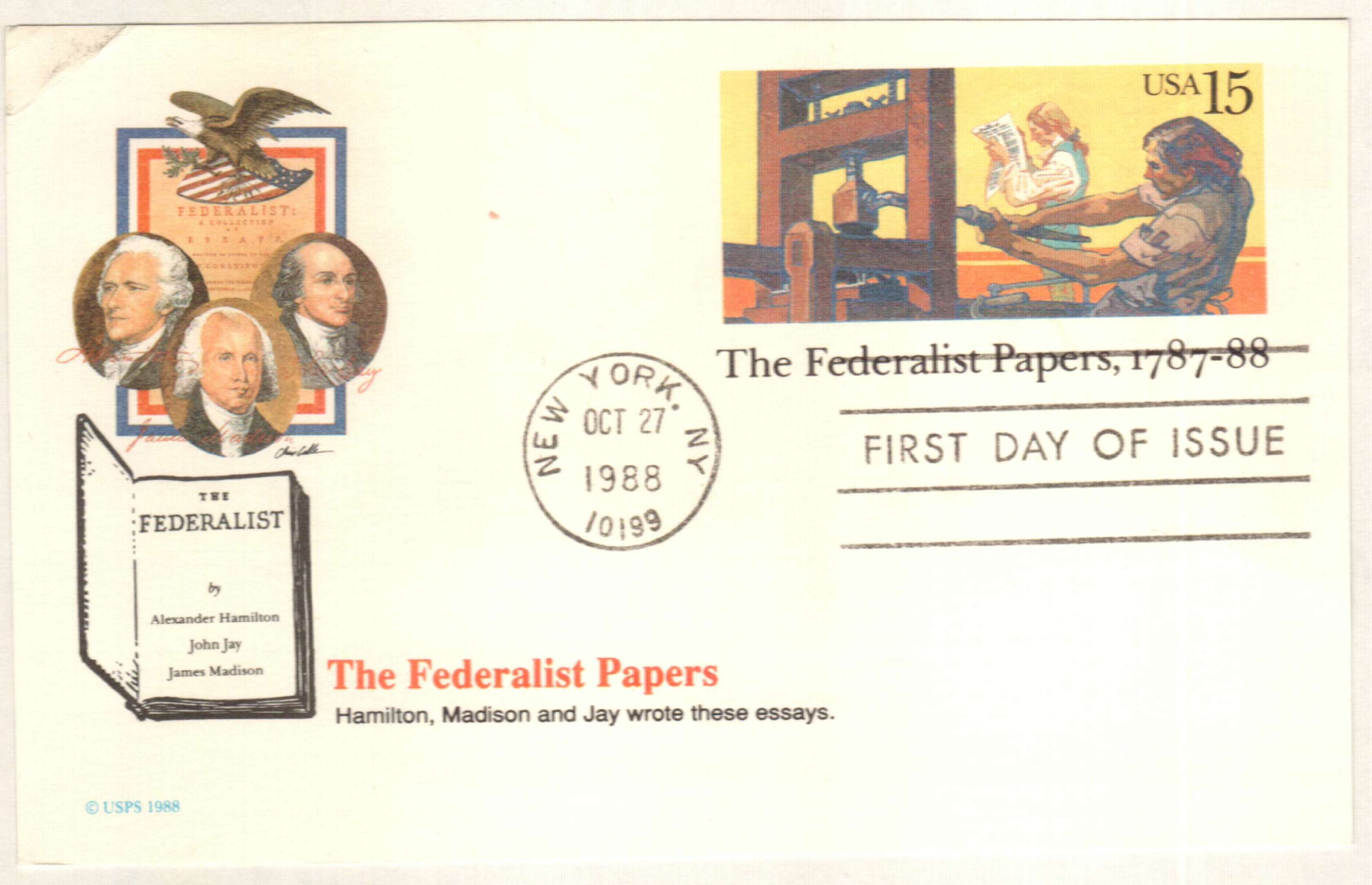
However, many people, including Alexander Hamilton, soon recognized that the Articles of Confederation were too weak to hold the Colonies together. The Articles of Confederation didn’t give the Congress the power to tax, regulate commerce, or enforce laws. Delegates met at the Annapolis Convention to improve the articles, but ultimately drafted a new Constitution.
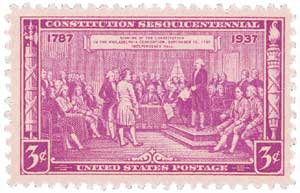
When the Constitution was completed, Hamilton, along with John Jay and James Madison, wrote a series of essays to encourage its ratification. The Federalist Papers explained the document, outlining the government and answering arguments by those who opposed it. The new Constitution was eventually ratified and the Articles of Confederation replaced on September 13, 1788.
Click here to read the Articles of Confederation.
Bicentennial Series
Continental Congress Approve Articles Of Confederation

On November 15, 1777, the Continental Congress approved the Articles of Confederation after 16 months of debate.
One of the earliest attempts to encourage cooperation and unity among the colonies was the 1754 Albany Congress. Also known as the Conference of Albany, it was the first time representatives from different colonies came together to discuss common concerns.

The meeting was mostly aimed at establishing treaties with Native Americans. However, much time was spent debating Benjamin Franklin’s Albany Plan – his call to establish a unified colonial government. While the plan was ultimately rejected, many of the ideas were later instituted in the Articles of Confederation. Franklin later claimed that had the Albany Plan been adopted, America’s fight for independence might have been delayed.
But over the next 20 years, the situation in the colonies changed drastically. The British began instituting new taxes that the colonists saw as unfair and tensions escalated, leading to armed conflict in the spring of 1775. Shortly after the fighting began, the Second Continental Congress met and began working as the colonies’ provisional government. Without an established government, the responsibility managing the war fell on the Congress. They adopted trade restrictions, created an army, issued currency, and negotiated with foreign governments.
The men of the Congress also knew that in order to be taken seriously by other nations, they needed legitimize themselves, as at that point, other nations saw them as rebels against an established monarchy. So the Continental Congress created three committees to draft the necessary documents – a Declaration of Independence, a Model Treaty, and the Articles of Confederation. The declaration would announce America’s entry into international relations, the model treaty was a guide for foreign relations, and the articles would serve as an international agreement on the formation of significant institutions for domestic and foreign affairs.

On June 12, 1776, the Continental Congress appointed a committee of 13 to draft a constitution for the new nation. Their goal was to create “a plan of confederacy for securing the freedom, sovereignty, and independence of the United States.” Led by John Dickinson, the committee worked for a month before presenting their ideas to Congress on July 12. They spent a great deal of time debating a number of issues including sovereignty, the powers of the new government, voting procedures, and whether to have a judiciary. The debates dragged on for a year before the final draft of the articles was written in the summer of 1777. Then, on November 15, 1777, Congress ratified the Articles of Confederation.
The rules and ideas set forth by the Articles went into use almost immediately. However, in order for the Articles to truly become law, they needed to be ratified by each of the states. Virginia was the first to ratify, on December 16, 1777. Over the next three years, the other 12 states slowly ratified. The process was slow because many of the states wanted additional conditions added. Maryland was the final state to ratify, on February 2, 1781. There was a formal ceremony marking the final ratification on March 1. The Continental Congress ended and the United States Congress began governing the next day.

The Articles of Confederation established a “firm league of friendship” among the 13 states. It gave the Congress responsibility for conducting foreign affairs (including war), maintaining an army and navy, and many other functions. One of the most lasting laws passed under the Confederation was the Northwest Ordinance of 1787. Historians consider this law one of the most important ever passed in U.S. history, as it provided the model for the organized growth of the U.S. The ordinance established government for the area north of the Ohio River and west of Pennsylvania, and illustrated the steps a territory would need to take to achieve statehood. The territory was quickly settled and eventually became five U.S. states: Ohio, Indiana, Illinois, Michigan, and Wisconsin. It also included part of Minnesota.

However, many people, including Alexander Hamilton, soon recognized that the Articles of Confederation were too weak to hold the Colonies together. The Articles of Confederation didn’t give the Congress the power to tax, regulate commerce, or enforce laws. Delegates met at the Annapolis Convention to improve the articles, but ultimately drafted a new Constitution.

When the Constitution was completed, Hamilton, along with John Jay and James Madison, wrote a series of essays to encourage its ratification. The Federalist Papers explained the document, outlining the government and answering arguments by those who opposed it. The new Constitution was eventually ratified and the Articles of Confederation replaced on September 13, 1788.
Click here to read the Articles of Confederation.





